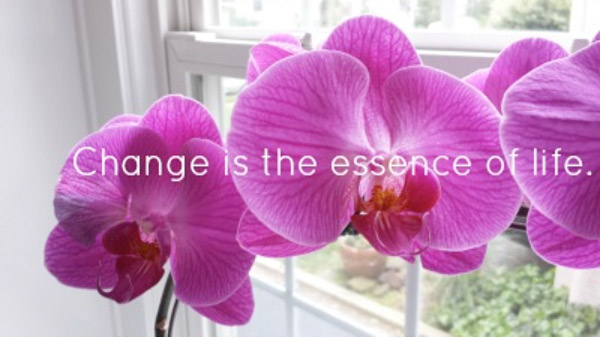As a determined, chubby-cheeked three year old, I strong-armed my parents into sending me to a private pre-school. My brother had gone there the year before, so in proper toddler fashion, I felt like it was my turn. I didn’t care that it was way beyond my parents’ budget or that my mom would have to arrange transportation for me everyday, I just knew that I would get swimming lessons! And trampoline time! Leaving my parents everyday for a new school where I knew no one didn’t scare me because all I saw were the fun parts in my future. I didn’t know what I didn’t know and each change was a delight. I was curious rather than fearful.
Fast forward 12 years when I was making the transition to high school. This time it was my parents doing the strong-arming; I was being sent (begrudgingly) to a private, catholic high school. I knew no one, again. Except this time, I was predicting the obstacles. I was older and wiser–I knew that changing schools and making new friends as a young adult would be harder this time; now I knew what I didn’t know before as a preschooler.
That’s the funny thing about transitions: your own expectations determine whether it will be an easy or difficult ride.
We often forget that with change comes opportunity; it’s a time to take a look around and figure out what is working in our lives. It provides the space to ask: what am I doing? Why am I doing it?
And with the right mindset, transitions can often be exciting. People usually meet change with anxiety, but it’s only because they are afraid of the unknown. Nothing is ever known for sure, until it happens.
If we could let go of our lame beliefs about change and remember that we have some basic tools at our disposal to help with the transition, it won’t be so scary. Armed with some simple awareness, we can disarm the fear of change and seamlessly move into the next step. It’s not as hard as you think.
Much like a butterfly coming to life, we can view our own evolution in a similar four part process. Whether they are major life transitions (child being born, getting married, death of a loved one) or smaller ones (getting kids back to school, getting a new boyfriend or new hairstyle), it’s easy to see how the phases relate to how the change actually happens.
Die (and be reborn)
In order to make any kind of transition, you have to let go of whatever you’re transitioning from. This may mean releasing an old lover, habit or lifestyle. Whether it’s a voluntary change or not, most shifts in life can be somewhat uncomfortable (even when they are welcomed!) Be gentle with yourself–take time to figure things out. This phase is not about making anything happen, it’s about what is happening to you. Be in the moment, talk to a friend, let it wash over you. Trusting the process will allow you to loosen your grip which will help you move forward; you can’t grasp at anything new with hands that are full.
Dream
The second part of any transition is the dreaming of what’s next. Challenging or exciting, dreams arrive via many different vehicles. One way of dreaming is to create a vision board. Walking through this process of identifying your feelings rather than coming up with concrete ideas can be helpful to shape what you really want. A second way of dreaming is to brainstorm with a close friend. This conjuring up period is not the time to be practical; this phase reveals to you what your next step will be and that can only happen with an open mind. In the imagination lies the heart of your path–let it run wild and see what comes up.
Do it
This third part is where the letting go and dreaming change into action. As the dreams continue to excite you, you will want to spring into action to make them a reality; it’s where the rubber hits the road. Don’t be discouraged if there are stops and starts as you try to make things happen. As with all new adventures, there is the opportunity for growth but there may be some failure before success. Patience and tenacity will get you through to the next phase.
Devour
This phase occurs when you have grabbed the golden ring and reached your goal of transition. Taking the time to acknowledge your courage and work towards change will help you feel good next time doubt comes up about transition. Enjoy the fruits of your labor–pop open the champagne and savor the victory!
If you understand these phases, you will know that there’s no need to get comfortable; as constantly moving and changing people, we know it won’t be long before another metamorphosis is at hand. Enjoy the prospect of knowing you can handle change when it happens again! No matter what kind of transition happens in your life, there will be certain phases of growth that are necessary in order to move forward; keeping these simple steps in mind will help make the transition easier.
And when in doubt, tap into your own determined, chubby-cheeked, 3 year old self to get you through it.
 Stephanie Martel is the publisher of the Vibrant Living Project where she writes about nutrition, personal development and the art of becoming yourself. She’s a certified health coach and graduate of the Institute for Integrative Nutrition, with a certificate in Holistic Health. She aims to show others that digging into who you are and creating the life you love can be fun, inspiring and an all around good time. To get more inspiration from her like this in your mailbox, sign up here.
Stephanie Martel is the publisher of the Vibrant Living Project where she writes about nutrition, personal development and the art of becoming yourself. She’s a certified health coach and graduate of the Institute for Integrative Nutrition, with a certificate in Holistic Health. She aims to show others that digging into who you are and creating the life you love can be fun, inspiring and an all around good time. To get more inspiration from her like this in your mailbox, sign up here.













I loved this article and enjoy reading your inspirations- thank you! Diane